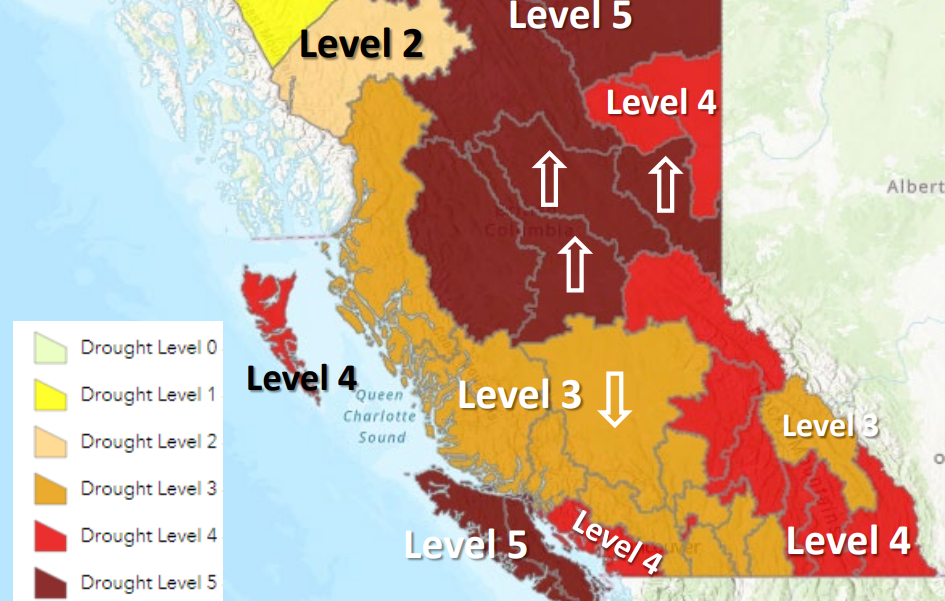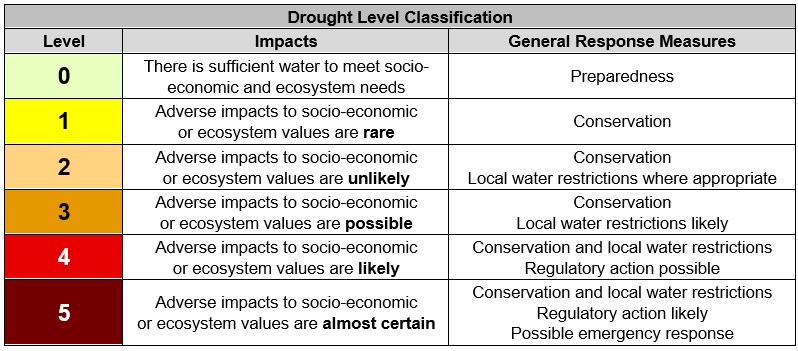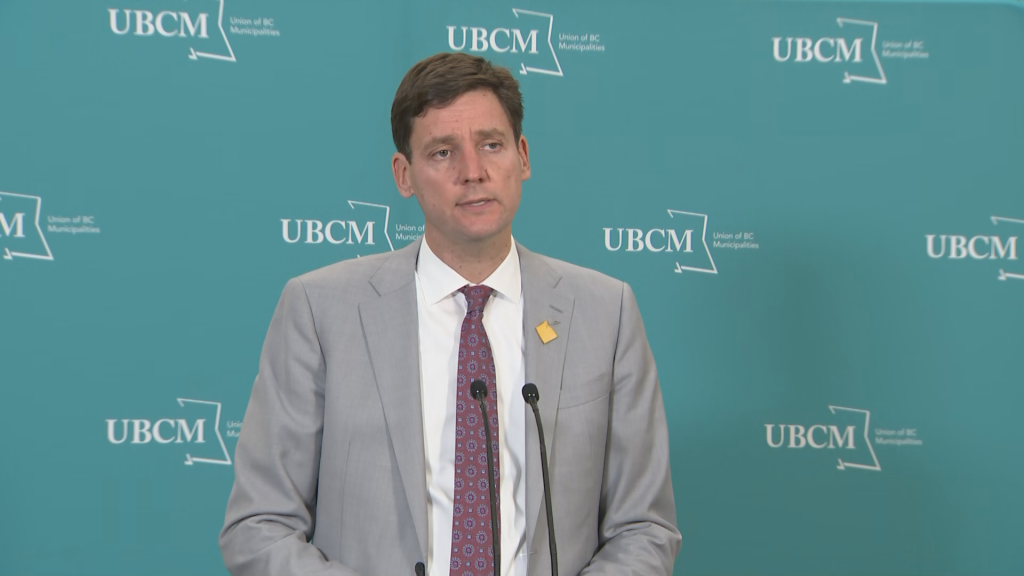B.C. drought conditions worsen for much of province: officials

Posted July 20, 2023 12:31 pm.
Last Updated July 20, 2023 8:10 pm.
Drought conditions for much of British Columbia have worsened over the last week, according to the B.C. River Forecast Centre’s latest update.
The centre says as of July 19, 74 river streamflow stations were at record lows, up from 71 just a week earlier.
Thursday’s update comes after the province increased the drought level to level 5 in three regions of B.C., including the South Peace, Parsnip, and Upper Fraser — West.

B.C. drought levels. (Courtesy B.C. Government)
Almost a quarter of the province is now at level 5, the highest ranking of a six-level drought system that starts at zero. Level 5 signals that “adverse impacts to socio-economic or ecosystem values are almost certain.”
According to the B.C. government, 94 per cent of the province is at a level 3 or higher drought level — meaning adverse impacts to socio-economic or ecosystem values “are possible.”
Drought conditions in B.C. were already worse last week than they were at the beginning of the fall of 2022, months ahead of historic patterns and levels of prior years.
On July 13, hydrologist Jonathan Boyd from the B.C. River Forecast Centre shared it has “never been like this, this early.”
Dave Campbell, the head of the River Forecast Centre with the Ministry of Forests, explains there has been a drop in rainfall across the province.
“In most areas of the province, we’re sitting in a precipitation deficit. So the gap between how much rain we would typically see and what we have seen in the range of 100 to 250 millimetres of rainfall over this period and some areas in the Coast, we’re seeing that those precipitation deficits are on the order of hundreds of millimetres,” he explained.
In order to make a dent in the drought and fire suppression efforts, Campbell says there needs to be a significant amount of precipitation.
“We really are looking at the requirement for a month above normal rainfall to get us back to get us back to a reset — so some significant dry spells.”
Hundreds of fires still burning across B.C.
Cliff Chapman, the director of wildfire operations with the BC Wildfire Service, says there are nearly 380 fires burning in the province as of Thursday afternoon, and notes that more may spark in the coming days.
Chapman adds that more than 80 per cent of the fires blazing in the province are believed to have been sparked by lightning.
“We’re seeing a significant number of our fires are lightning-caused and that’s a big credit to the public of B.C. for being responsible when you’re in the backcountry, you’re camping, when you’re doing things outdoors, taking care to be responsible that we don’t see human cost starts — and we thank you for that,” he said.
Over the past week, he adds that close to 200 fires were started, with the majority of those now being held or under control.
Related articles:
-
B.C. seeing worst wildfire season on record, farmers feel the effects
-
Thousands in B.C. on evacuation alert as drought and wildfires persist
-
Almost 80 evacuation orders, alerts across B.C. as wildfires burn
Chapman adds that 2,500 people are on the ground in the province working at getting the fires under control, including personnel from around the world.
“The next few days are going to be challenging. We are potentially seeing rain into the north into some of the areas where we’ve seen significant fires in the last few months. With that though, we’re also going to see continued hot and dry weather in the south,” he said.
“In terms of the next few days, as I said, it’s going…to continue to be hot and dry, and so potentially going to see some significant winds continue in the south. In particular, we’re looking at tomorrow and Saturday, which will be challenging for fires on the landscape and it does look like we may see a bit of a reprieve for the northern part of the province coming into next week.”
Campbell adds that the lack of rainfall seen in some areas is “unprecedented.”
“What we’re seeing is our fuel conditions are as dry as we’ve ever seen. And that goes from…a surface layer fuels, quick, fast burning fuels, the grasses and the moss all the way to the large standing timber is in a lot drier than maybe previous years. And so we need the rainfall,” he said.








